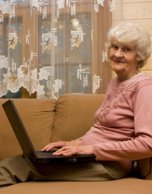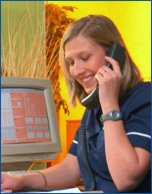
 |
|
About MATCH

Assistive technology helps those with disabilities cope with normal life. Specialised technology is also being used to monitor situations such as someone becoming immobile or incapable. Through use of sophisticated networking and management software, abnormal situations are detected and reported to a responder.
The project is helping in a number of ways:
- maintaining the independence of those receiving social and health care at home
- improving their quality of life
- enhancing the care they receive at home
- easing the burden on their carers.
The project has been supported by the SFC (Scottish Funding Council) from 1st November 2005 to 31st October 2013 under grant reference HR04016.
The project is a collaboration among a number of Scottish Universities, the founder members being:
The project was also supported by external project partners.
Our Aims
The overall aim is to develop a research base for advanced technologies in support of social and health care at home. This includes care at home of those with long-term illness, physical or mental impairment. The project has established a research infrastructure in the specific areas of home care networks, lifestyle monitoring, speech communication, and assistive technology (specialised devices for disabilities).
The client users for MATCH include older people and people with disabilities of all ages. Different questions arise for varied client groups. MATCH has therefore developed a research network with sufficient multi-disciplinary coverage to explore issues for a range of needs. As examples, MATCH has aimed to benefit users in contexts such as:
- older and/or disabled people living in sheltered or warden-assisted housing
- older and/or disabled people living in their own dwelling, and wishing to stay there for as long as possible in order to retain their independence
- families with a disabled member, e.g. through the birth of a disabled child or through acquired disability.

Our Objectives
In support of the overall aim, the following are the high-level objectives of the collaboration:
- to create a Scottish centre of excellence in the field of technologies for home care
- to create a network of permanent staff from identified and new academic, industrial, care and housing partners
- to elaborate existing techniques from the academic partners into a viable and integrated research base
- to develop specialised laboratories for key themes in home care
- to establish distributed demonstration facilities as focal points for the project, and as a means of integrating and showcasing the project solutions
- to provide a specialised training environment for young researchers
- to integrate existing products from the industrial partners into the research base
- to integrate current practices of the care-providing partners into the research base
- to prepare management and technical guides for use of home care technologies
- to establish care models for appropriate and ethical use of the technologies.
Our Achievements
We have created a flexible design for a home care system. This is built from individual components that can easily work with each other. As examples, our components support:
- different kinds of networks inside and outside the home (e.g. wireless connections, mobile telephones, the Internet)
- rules for how the home care system should react to different situations (e.g. how best to satisfy a user's goal of feeling secure, or what to do if the user has fallen)
- automatic speech recognition and speech synthesis (e.g. so the user can make and check appointments with the doctor)
- new ways of working with the home care system such as use of touch, gesture and audio
- techniques for collecting information about how the home is used, allowing trends and anomalies to be discovered (e.g. the user becoming less able to perform certain tasks)
Our Activities
Visit our membership page to find out how you can join us.
Our resource pages provide an overview of the kind of things we do.
| MATCH Home Page | About MATCH | News & Events | People | Partners | Contact Us | ||
| Original Text and Images © MATCH Partners | Privacy Statement |